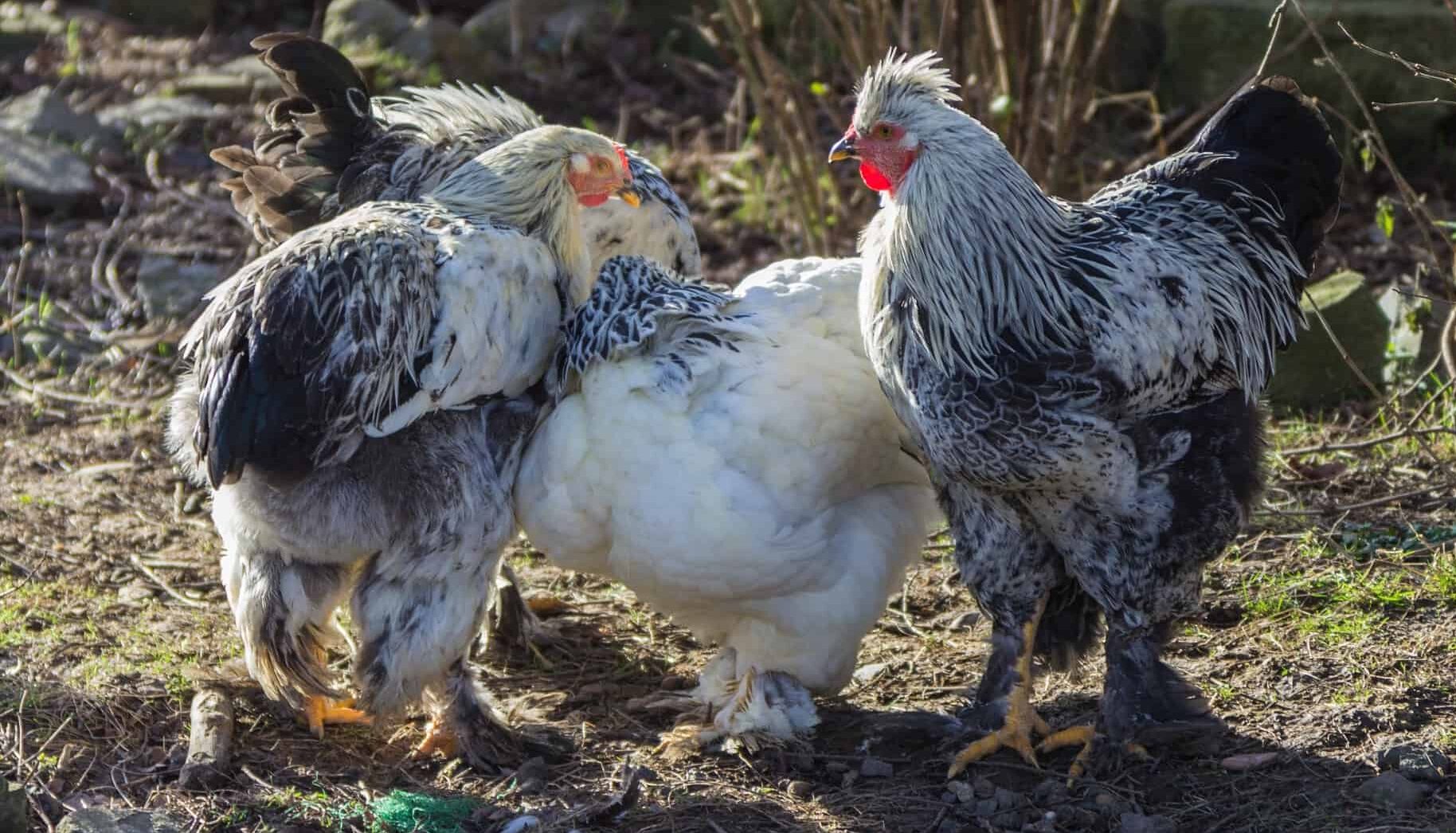If ever there was a “queen of chickens,” it would be the Brahma chicken because of its great size, majestic plumage, and dual purpose for eggs and meat (heavy roasters or capons). Brahmas are a calm breed and make a great addition to any flock.
Something unique is Brahma hens lay eggs fairly consistently during the cold winter months. Raising Brahamas with other breeds — those who begin laying in the spring when it’s warmer and lighter longer — means you can enjoy eggs throughout the year.
Brahma chickens are cold-hardy and good for beginners. They are feathered head-to-toe which sometimes makes them look even larger than their 10 – 12 pounds.
Here’s an in-depth look at the Brahma chicken, including details about the hens, roosters, and chicks, egg and meat production, appearance, official and unofficial varieties, and more.
Brahma Chicken Breed Profile
- Names: Brahma, Gray Chittagong, Shanghai, Burnham, and Brahmaputra
- Weight: Brahma roosters weigh about 12 pounds (5.5kg). Brahma hens weigh around 10 pounds (4.5kg)
- Rarity: Common
- Class: Asiatic Class
Brahma Chicken Appearance
When you first see a Brahma in relation to other chicken breeds, you will realize how much larger it is. Brahmas are sizable birds with powerful wings. Their heavy weight makes them poor fliers. They have yellow skin. Their feathers are tightly bound, soft, and extend to their hind toes. They have feathered legs and feathered feet.
Brahma chickens have a distinctly large head with a pea comb, a drooping brow, and a powerful beak. Like most chickens, the roosters have larger combs and wattles (the thin fleshy lobes that hang from the neck) than the hens.

Brahma Chicken Colors
Officially, Brahma chickens come in three color classifications; Dark, Light, and Buff. These three are the only colors recognized in the United States. Other colors like Blue Brahma chicken, Black, Crele, Partridge, and Barred are recognized elsewhere.
- Light Brahma Chicken
Light Brahmas are mainly white, with a hint of gray. The hackles have some black striping, and the tail is black but may have a few white feathers mixed in.
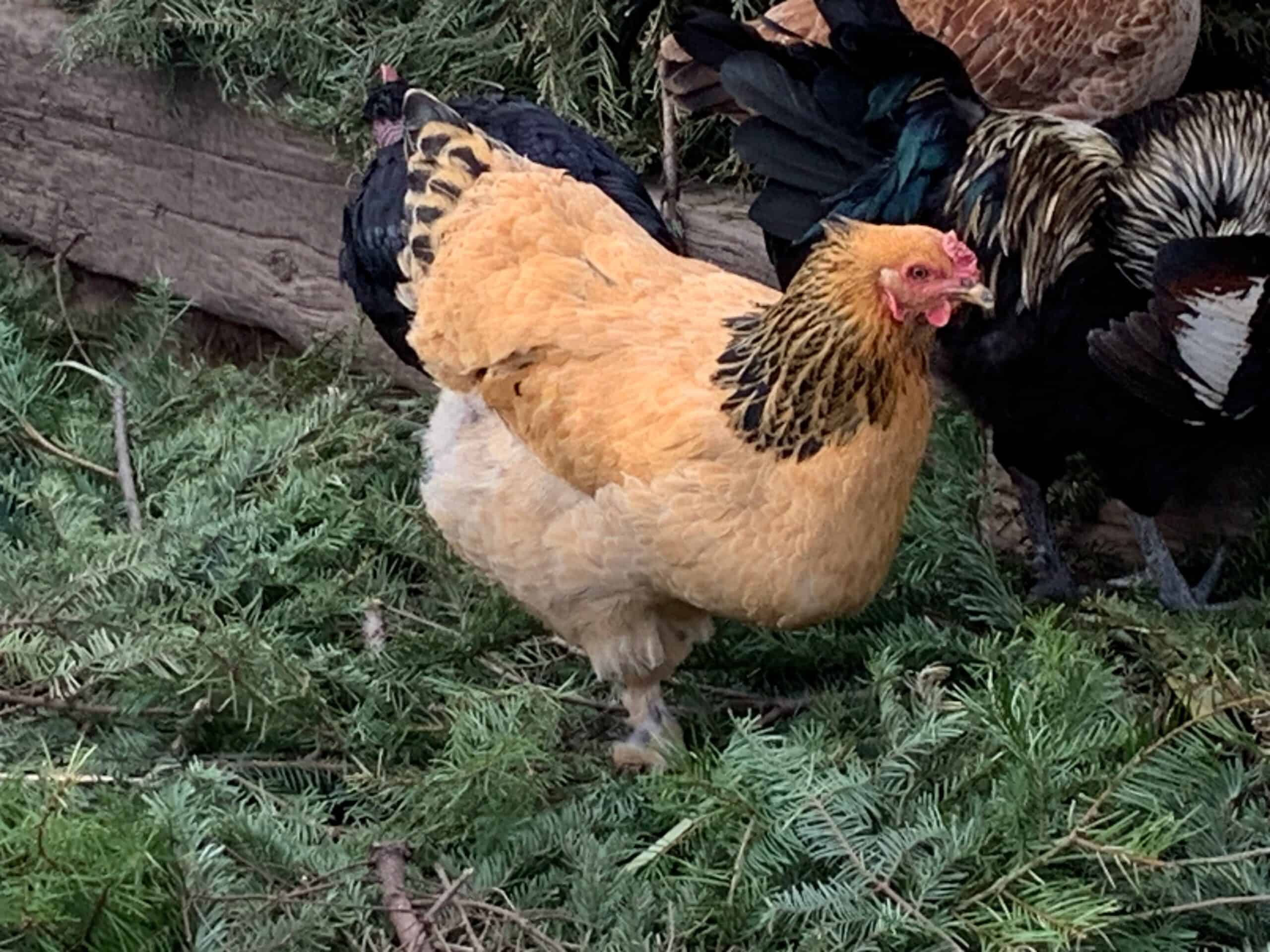
- Buff Brahma Chicken
The Buff Brahma is similar to the Light Brahma. The difference is that where the light has white feathers, the buff Brahma has brown. The warm brown of the Buff Brahma chicken makes it a favorite of many farmers.
- Dark Brahma Chicken
Dark Brahma hens have black hackles with silver and some white highlights and a saddle with black stripes. The body, wings, and breast are gray with some black highlights as well.
Dark Brahma roosters have silver hackles and a black stripped saddle. The shoulders are silver, while the tail, breast, and body are entirely black.
Brahma Chicken Size and Weight
Brahma chickens are heavy fowl and make good meat chickens. They can grow as tall as 30 inches. As such, children might find full-grown Brahmas intimidating. Weights:
- Hen: 10 – 12 pounds
- Rooster: Up to 12 – 14 pounds
- Bantam Brahma hen: Just over 2 pounds mature weight
- Bantam Brahma rooster: Around 3 pounds mature weight
When raising large chickens, be sure to buy or build large chicken nesting boxes. They take up more space than other chicken breeds. Other large breeds are Jersey Giant chickens and Cochins which are typically a bit larger than Brahmas.
Brahma Hen Egg Production
While many people raise Brahmas for meat, they’re decent egg producers as well. The Brahma breed matures relatively slowly compared to other birds. It takes 7 months on average for Brahma pullets to begin laying eggs. Mature Brahma hens can lay an average of 3 – 5 eggs a week and about 160 eggs a year.
Brahma Egg Color and Egg Size
The Brahma hen eggs are brown. They can be lighter or darker brown. Sometimes their eggs can appear with white dots or speckled. Brahma hens lay medium to large-sized eggs, weighing about 55 – 60 grams.
Laying in Winter
Brahma hens are a great choice if you want to have eggs in the colder months. While most breeds start to molt during winter, Brahma hens will keep laying eggs. They are an excellent cold weather layer. As spring approaches, their egg production decreases. This is different from other breeds when they resume optimum egg production. Brahmas lay most of their eggs between October and May, often going broody as weather continues to gets warmer.
Broodiness
Brahma hens are not known for their broodiness. When in a mixed flock, they may become broody when other breeds do. When the few hens that get broody do, they’ll sit on their eggs until they hatch. Pay attention to any broody Brahma hen you notice, checking it regularly because their weight might crush the newly hatched chicks.
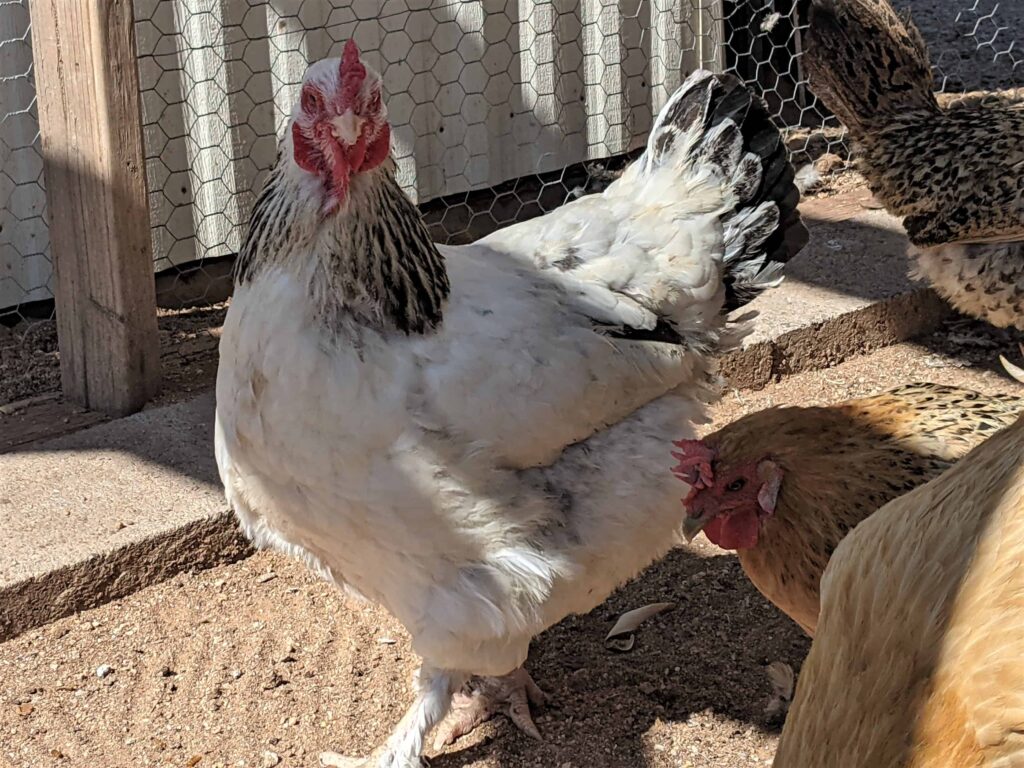
Brahma Rooster
The mature Brahma rooster is taller and heavier than Brahma hens. At maturity, the males grow as tall as 2.5 – 3 feet and weigh about 12 pounds on average. Though, some have been reported to reach up to 15 pounds. If you are planning to raise a Brahma rooster, it’s best to include it when you still have chicks.
The benefits to raising a rooster alongside your hens are to hatch Brahma chicks and to have protection for your flock. Although Brahma roosters are less domineering than other roosters, they will work hard to scare off predators. Their large size also works to deter threats.
Are Brahma Roosters Aggressive?
No, Brahma roosters and chickens are considered to be gentle giants. Their size can make them intimidating to other chicken breeds. Generally, Brahmas are toward the top of the pecking order in a mixed flock despite them not being aggressive.
Brahma roosters aren’t as aggressive as the roosters of most other breeds, even in their interaction with hens or other roosters in the flock. They are friendly to other chickens and humans alike and can even be taught a few tricks. Overall, Brahma roosters are friendly. However, hungry roosters may bully other birds when there’s not enough food around.
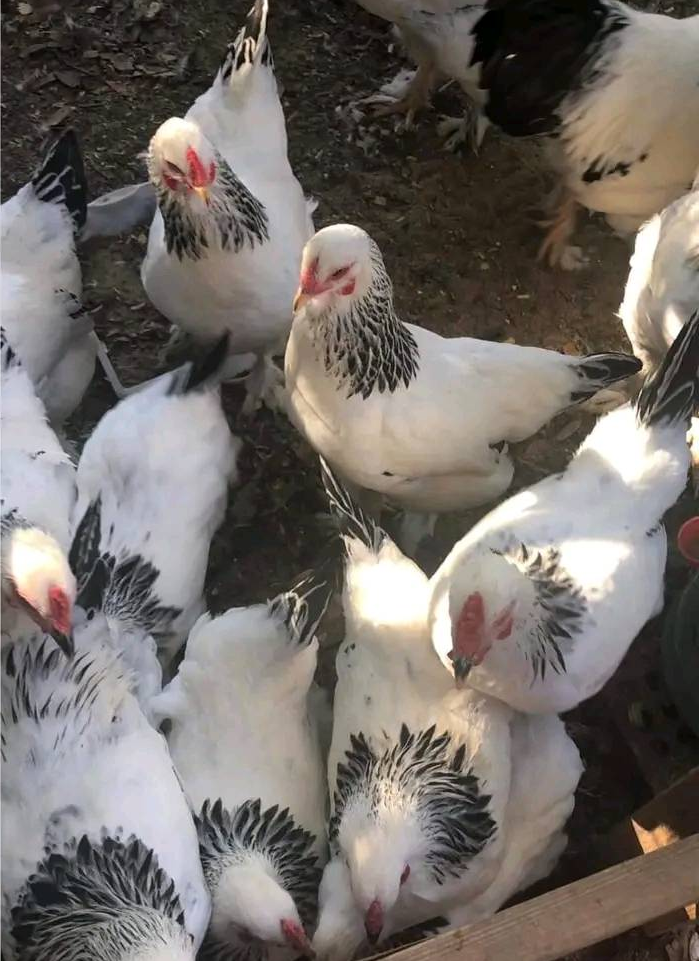
Brahma Pullets
Pullets are hens that haven’t started laying eggs. Brahma hens mature slowly; they don’t start laying eggs until around 7 months, and it’s possible not to see eggs until the ninth or tenth month. This delay might put some people off, but in most cases, the delay is well worth the wait, as Brahma hens are decent egg producers.
Brahma Chicks
If you are interested in hatching Brahma chicks, you’ll also need a rooster to lay eggs so they are fertile. Brahma hens don’t tend to go broody but they are considered fairly good mothers.
It takes about 21 days for a Brahma egg to hatch. The hatchling gets heat from their mother until they can regulate their own temperatures. If your hens aren’t wanting to sit and incubate their clutch of eggs, you can incubate eggs yourself.
Hatchlings require a brooder box containing fresh water, clean bedding, and chick feed. The brooder should be at least 18 inches high and have floor space of a half square foot per chick for the first two weeks. After that, increase the area to a square foot per bird. Ensure the box is well covered to prevent drafts, predators, and other birds.
In cases where the mother doesn’t brood them, provide a chick heating plate with a temperature of just below 100 degrees Fahrenheit for the first 3 – 5 days. Reduce the temperature by 5 degrees Fahrenheit every week until the chicks are fully independent and ready to explore the world.
Are Brahmas Beginner Friendly?
Brahma chickens have a laid-back personality, and they’re also dual-purpose (for both meat and egg production). They’re good-natured and happy being around small children. These traits make them ideally suited as a starter bird for an aspiring small flock poultry farmer or family small-holding.
Because of their large and heavy size, they will be easier to contain than other breeds. However, they will need a bit more space.
Hardiness
An excellent trait of the Brahma chicken is its hardy nature; it’s comfortable in almost every kind of weather. It is one of the few birds comfortable in a North American winter while also thriving in the summer. Like other chickens, however, extreme heat will have adverse effects on the Brahma.
Brahmas are also expert foragers, digging up worms and insects for food, though you still must supplement their foraging with chicken feed.
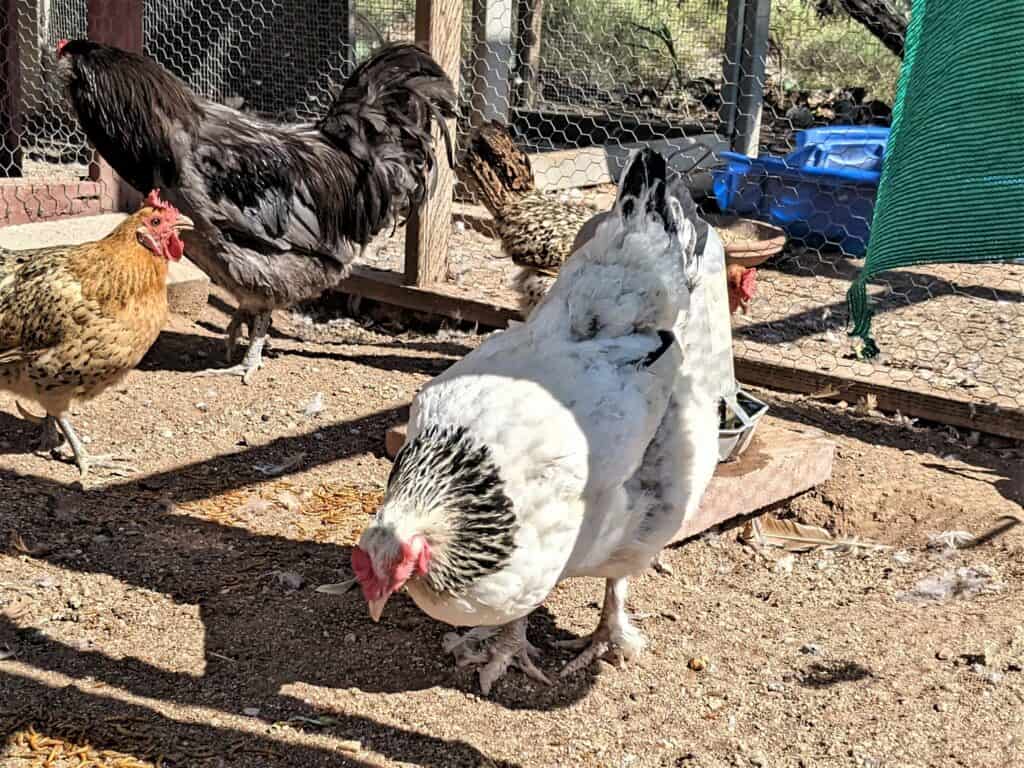
Temperament/Personality
Brahma chickens might appear fierce, but these birds are known for their calm and docile nature. While other chickens might be nervous when you pick them up, Brahma chickens are docile.
Some of them are downright friendly and curious, not at all afraid of humans, and their bulky weight makes them easy to catch. Brahma chickens make excellent pets for children. Consider raising them with Cochin chickens which are also large and friendly.
Noise Level
Brahmas are usually quiet birds, though they’ll coo when laying eggs. Their quietness can serve as an alarm of sorts, as any noise they make will alert the farmer of something unusual happening. Like others, Brahma roosters will crow several times each day.
Purpose for Raising Brahma Chicken
There are many reasons to raise this breed. In addition to being friendly and not very aggressive in a mixed flock, they are ideal for backyards. They are hardy in most climates, including colder ones, due to their heavy feathering. Brahmas are dual-purpose chickens.
Meat Production
Brahmas are excellent meat birds. They are marketed as heavy roasters or capons. Their massive size makes them obvious meat production chickens, although they do not grow as fast as most broiler varieties.
Egg Production
Another purpose for raising them is for their egg-laying capabilities. Hens lay around 3 – 5 eggs per week.
Brahma History and Origin
The Brahma chicken’s exact origin is still up for debate, though it’s widely believed to have been bred in America from large-sized birds with many foot feathers. The most commonly accepted theory is that the birds were imported from a Shanghai port in China, hence the reason that they’re also called Shanghai birds.
It’s believed that they crossbred these Shanghai birds with Gray Chittagong birds originating from Malaysia, leading to the distinctive pea comb and large head. The interbreeding led to more than a dozen different strains under various names until it was officially named “Brahmaputra” in 1852. After some time, they shortened the name to just “Brahma.”
From the mid-19th century till around 1930, Brahma chickens were the primary source of chicken meat in America.
As other, faster-growing commercial breeds appeared, many farmers discarded the Brahma chickens for more quickly maturing birds. Still, recent years have seen the Brahma stage a comeback, largely because of its popularity with backyard poultry farmers.
It is considered a heritage chicken, meaning it existed before the middle of the 20th century. The livestock conservancy also classifies it as “recovering,” thanks to its reemergence among backyard farmers. The Poultry Association recognizes the Brahma chicken as a heritage breed.
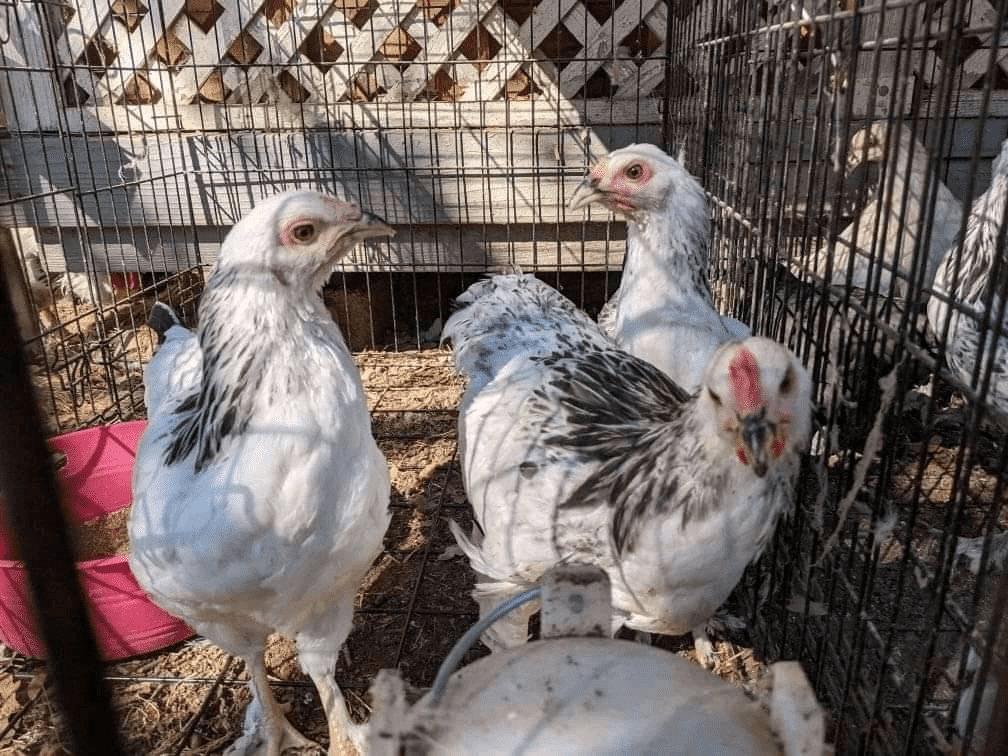
Recognized Varieties
The varieties of Brahma recognized by the American Poultry Association are the Dark Brahma, Light Brahma, and Buff Brahma. There are some varieties not recognized by the American Poultry association, such as Buff Laced, Silver Laced, and Gold Laced.
Buff Laced
Created by Dan Powell in 2000, the buff laced Brahma is a beautiful bird with white shoulders, hackles, and tail. But the bird’s wings, saddle and breasts are laced with brown feathers. These birds can produce up to 150 eggs a year.
Silver Laced
Silver laced Brahmas are much like the buff laced, but with deep to medium grey feathers instead of brown.
Gold Laced
Gold laced Brahmas generally have golden-brown feathers with black edging. The feathers are uniform for most of the chicken’s body.
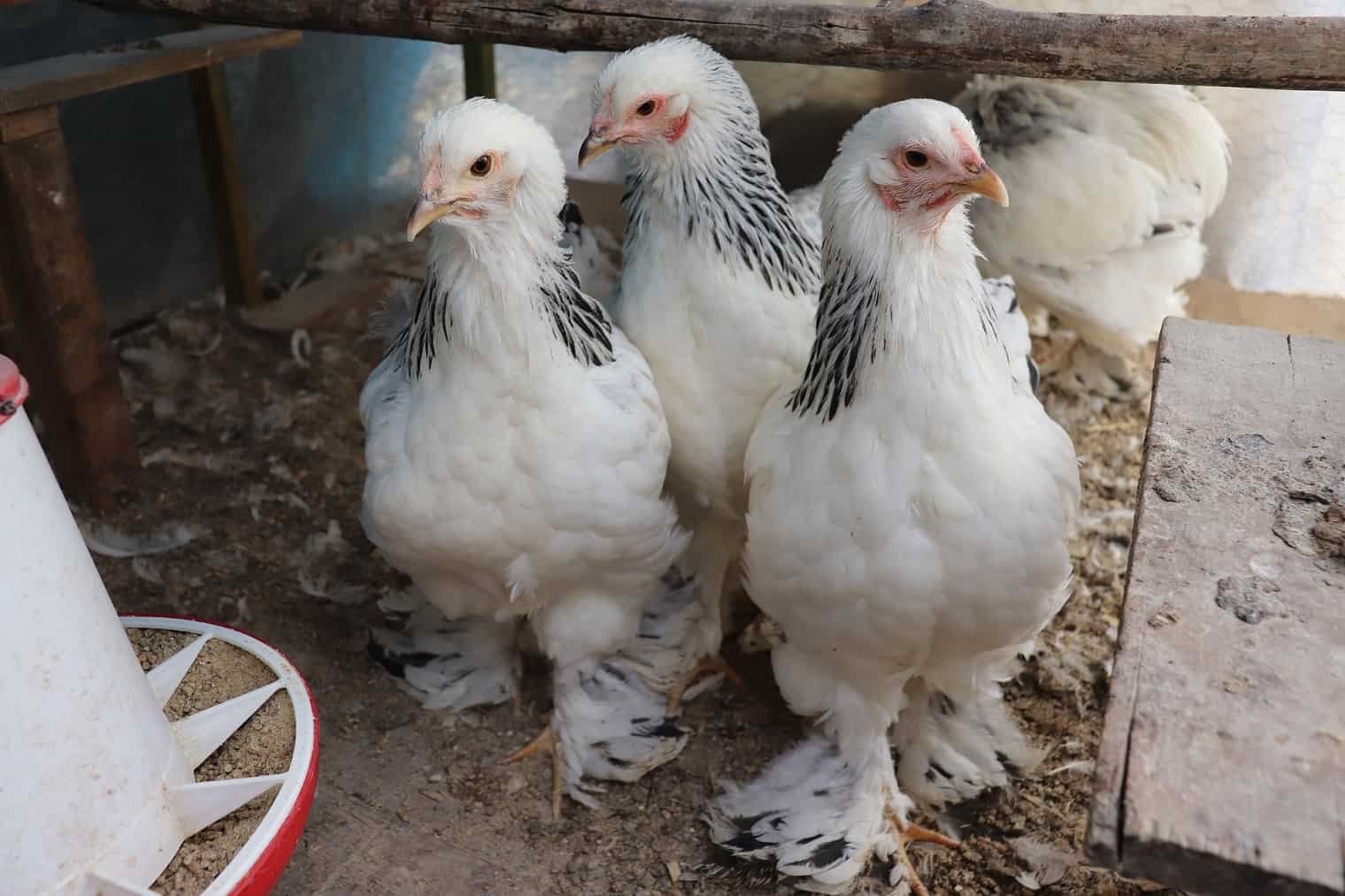
Caring for Brahma Chickens
When rearing Brahma chickens, there are some things you have to consider. First, the birds are sizable, so they will need large spaces. Also, the coop should be strong. Flimsy wood won’t do, as it can break under the chickens’ substantial weight, leading to accidents or worse, death.
- They are poor fliers, so a barrier of about 3 feet will be enough to keep them cooped in.
- Their feathered feet may be intriguing, but they can also hide injuries, so you must examine them regularly.
- Though Brahma chickens are comfortable cold climates, it is still necessary to provide shade and cool water to prevent heat stress, especially when temperatures rise.
- Bear in mind that Brahma chickens consume more feed than the average chicken. They do better when they’re allowed to forage and roam about.
Lifespan
On average, the Brahma chicken lifespan is between 5 – 8 years. It’s uncommon to see eight-year-old Brahmas. Opportunities to forage and free-range will help keep stress lower.
Health
Brahmas are hardy birds, but they are still susceptible to some health issues. Maintaining and cleaning the coop regularly will help minimize issues. Perform routine health checks.
In the winter, feet feathers cause their feet to stay wet as they walk through snow and mud. The moisture can freeze and create small balls on the chicken’s feet, which will lead to frostbite, damaging the affected toes if not attended to on time.
One way to avoid this problem is to keep them in coops during the winter months or regularly checking their feet if you allow them outside during this time. You can also dip their feet in warm water to get rid of caked mud or poop.
An advantage of raising Brahmas is they are cold tolerant. Due to their pea comb, which is a small and flat comb, means they are less apt to get frostbite on their combs and faces.
It’s also important to note the quill feathers on their feet can snag and pull off if caught on things. Occasionally, their foot feathering might snag and pull off suddenly, causing heavy bleeding. If this happens, some cornstarch or styptic powder can stop the bleeding, and the feather should grow back in weeks.
Parasites such as lice and scaly mites find the thick plumage of Brahma chickens concealing, and for this reason, they can go largely unnoticed on an affected chicken. You must examine the feathers frequently to prevent infestations. They will also benefit from a dust bath.
Brahma chickens are more at risk of bumblefoot than other chickens because of their heavy weight.
Shelter
Like most other livestock and chicken breeds, you’ll need to ensure they have shade as well as protection from weather, including storms. In addition to protecting from the elements, they’ll need shelter from predators.
Also with Brahmas, it’s important to ensure the entrances to the coop and run are wide and tall enough for them to get through. How Much Space Do Chickens Need
What Do Brahma Chickens Eat?
Brahmas are large chickens. They require more food than smaller breeds. On average, this breed can eat up to a third of a pound of feed daily. They are good at foraging as well and will enjoy scratching around.
Like all breeds, they will require food and access to clean water each day. Having multiple chicken waterers is a way to keep water cleaner.
It’s important to start chicks on chick starter feed with 18% protein. For older Brahmas, supplement with a commercial grade layer feed with a minimum of 16% protein. It will be helpful to supplement the feed with additional protein treats such as crickets and mealworms.
Other important supplements include calcium. To do this, you can set up a bowl of oyster or shell grit. Omega-3 is also beneficial. Can Chickens Have Strawberries
Are Brahma Chickens Good Layers?
Yes, Brahma hens are good layers with a safe and secure nesting box. The benefit to raising this breed is you will have a continual source of eggs in the colder months. Many other breeds egg-laying productivity declines in cold temperatures. The Brahmas’ increases. This makes them a great choice in a mixed flock.
Pros and Cons to Raising Giant Brahma Chickens
There are pros and cons to raising Brahma chickens. This is what sets them apart from other breeds.
Pros:
- Dual-purpose, good layers
- Friendly, docile
- Cold hardy
- Lays in cold season
- Suitable to backyard living
- More difficult to escape because of their weight; not good at flying away
- Roosters are less aggressive than other breeds
Cons:
- Huge bird and will need a bit more space
- Feet feathers prone to frostbite, caked mud, etc.
- Thick feathers can hide parasites; inspect routinely
- Aren’t as heat tolerant as other breeds
Fun Facts About Brahma Chickens
- Records in 1852 showed a Mr. George Burnham exported some Brahma chickens to England, marking their origin in England. The Dark Brahma developed from these birds.
- Dark Brahmas tend to weigh less than light Brahmas by about a pound.
- Merakli, a three-foot-tall, light Brahma in Kosovo, is thought to be the largest chicken in the world at 16.6 pounds (7.7kg).
Beginner-Friendly Chickens
Brahma chickens are one of the largest chicken breeds and are often referred to as the king of chickens. They can grow up to three feet, with an average weight of 12 pounds for roosters and 10 pounds for hens. Hens can produce up to 150 eggs annually at maturity, making the Brahma dual-purpose meat and egg-producing chicken.
Brahmas are docile, quiet, beautiful, and relatively easy to care for. The main health issues are with their feathered feet, but this shouldn’t be a problem if you inspect them regularly.
The light, dark, and buff Brahmas are the only three officially recognized varieties in the US, though there are several other varieties.
Related:
Featured image credit of Brahama chickens: meineresterampe, Pixabay

